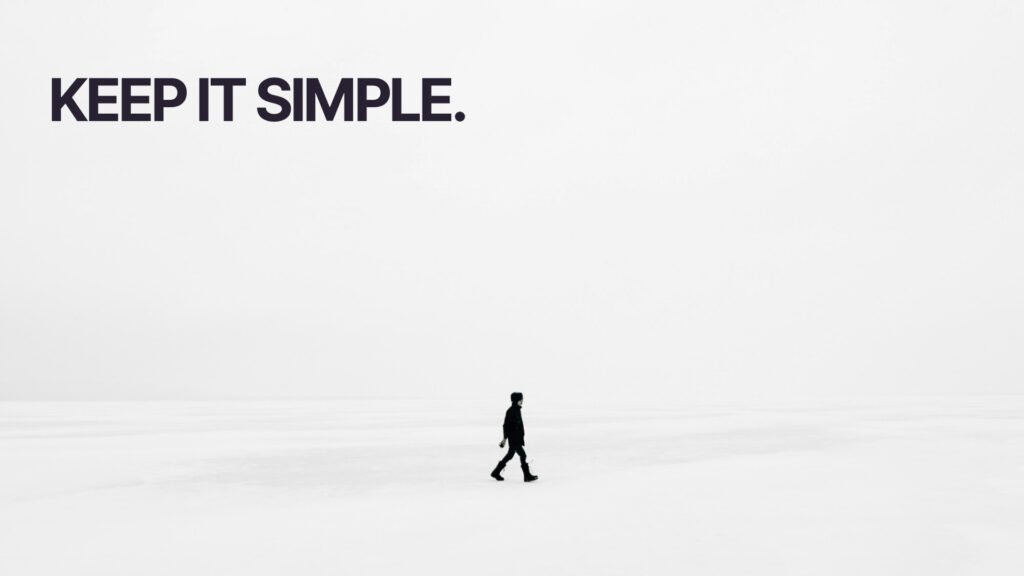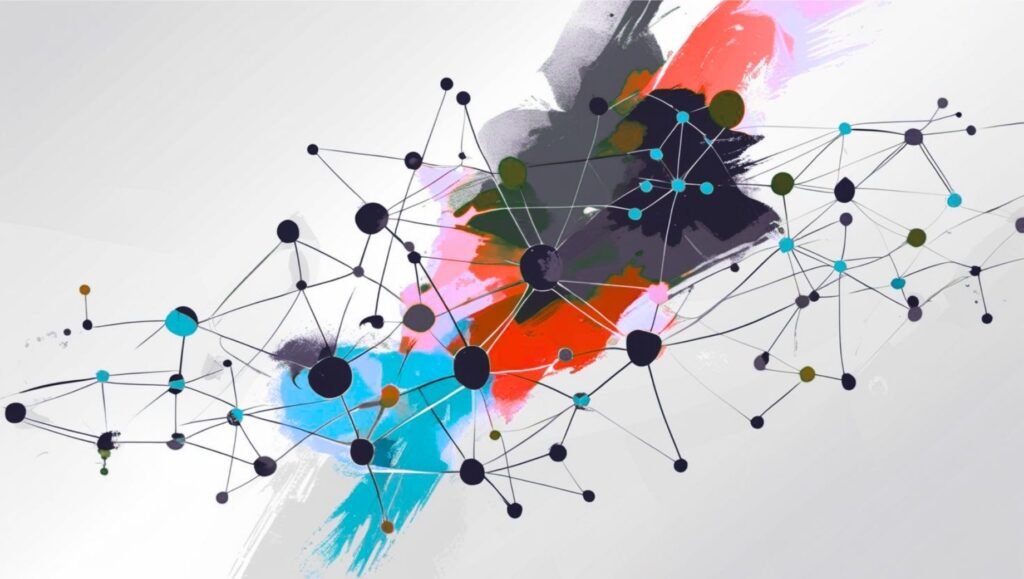
Data storytelling completely changed my approach to data engineering when I realized I could be inspired by different forms of art.
Before this realization, I was spending weeks building datasets that technically worked, but either told terrible stories or gave no substance. I’d create these massive, comprehensive data structures that captured every possible metric, every interaction, every touchpoint. The business stakeholders would stare at my presentations thinking “so what”.
That’s when it hit me. I was approaching data like a data engineer instead of like a storyteller.
As I started diving deeper into customer journey analytics, I kept hitting the same wall. I’d build these complex datasets and realize they weren’t giving me the insights I needed. I needed insights that would give the clearest answer to the actual business problem.
That’s when I started failing fast on purpose. Building different datasets, testing approaches, learning from what didn’t work.
Most data engineers would call this inefficient. I call it essential.
The Simplification Revolution

The breakthrough came when I stopped trying to capture every piece of connected data and started testing with removing complexity. This data simplification approach became the foundation of my creative data science methodology.
Instead of building many-to-many relationships that captured every nuance, I focused on single-to-many structures. When I encountered multiple rows of complicated data, I’d test custom aggregations to collapse everything into singular rows.
Through this process, binary segmentations became my secret weapon.
Take customer contact data. Traditional approaches count everything: did they contact once, twice, ten times? Before or after specific actions? The complexity multiplies until you’re drowning in analysis paralysis.
Instead, I simplified it to: did they contact us or not during this timeframe?
That binary approach revealed patterns that comprehensive analysis had completely missed. Wildly, when you start with simple datasets, you can find insights that may have never been seen before.
This mirrors how artists work. They focus on essential elements of a composition rather than every possible detail. Ultimately, the power is in what you choose to include, not what you can technically capture.
Data As Human Story
The real transformation happened when I started thinking about my data presentations as literal data storytelling.
We experience life chronologically. We have good days and bad days. Sometimes a friction point can turn a good day into a bad one. Sometimes those scenarios change our mood, sometimes they don’t.
It turns out, customer journey data works the same way.
Understanding this, I began creating chronological views with clear start and end times. I’d narrow the scope to specific populations, identify the highest aggregated actions occurring in that timeframe, map touchpoints, track funnel completions, and highlight friction points.
This approach resonates because it aligns with how humans actually experience products and companies. The complicated datasets get defined into insights that mirror typical human experience.
However, here’s what most data professionals miss: technical data alone lies to you.
Just because somebody contacted a company doesn’t mean it was positive or negative. To understand what customers actually experience, you need to layer in what they’re saying in surveys, reviews, and conversation transcripts alongside the actions they take.
This insight came from working with qualitative professionals, researchers, and voice-of-customer departments. They taught me that customer journeys include perception metrics that pure behavioral data doesn’t capture.
This approach to customer journey intelligence (blending behavioral data with perception metrics to create chronological narratives) forms the foundation of how I think about data storytelling. If you want to dive deeper into the technical methodology behind building these customer experience insights, I’ve detailed the complete framework in my customer experience journey guide.
The Visual Translation

When I present insights to business leaders, the magic happens when I translate corporate metrics back to human experience. This data visualization strategy bridges the gap between analytics and action.
Rather than company-level analysis, I show human-level comparisons. Customers did XYZ on day one versus day seven. Perception scores changed alongside business outcomes. All displayed in one visual.
For the ultimate game-changer, super straight-to-the-point infographics work best. Simple bar charts with color coding that’s pleasing to the eye. Big percentages with color-coded arrows pointing up or down. Clear visual hierarchy that makes differences immediately obvious. These visual analytics principles turn complicated business intelligence into insights to be taken seriously.
When people see lots of data, their brains shut off. In contrast, beautiful visualizations keeps them focused on your main point.
The moment it clicks for business leaders is when insights become simple to understand at a human level. Without many words. Just clear, actionable visual stories.
The Technical Foundation Still Matters
I’m not suggesting we abandon technical foundations. Everyone needs to go through the base layer of logical data science first. You need to understand what’s expected in the technical space.
However, as data scientists become more comfortable with technical work, that’s when they should begin learning to transform complex pieces into simple stories. Learning data storytelling. Gaining experience in artistic approaches that add layers to technical expertise.
It’s a personality thing too. Some data professionals genuinely enjoy the pure technical aspects. Spreadsheets, black-and-white analysis, routine approaches. That’s valuable work.
On the other hand, others want a different path. They want to do more than routine technical approaches. Both paths are great, but there should be avenues for adding artistic training and knowledge bases.
Ultimately, the artistic path will be more future-thinking and innovative in developing the future of creative data science and advanced data storytelling.
Bridging The Action Gap

Most data projects fail not because of bad analysis, but because insights don’t translate into decisions. This is precisely where data storytelling becomes critical for business intelligence success.
The artistic approach connects the gap between technical aspects of data science and data-driven actions taken by business professionals. That data story needs to be told in the best way possible to create true change.
In my experience, graphic design and data storytelling take the traditional presentation even further. Because of this, audiences have a better understanding of what needs to be done which help companies make better and faster decisions.
Something to think about: the data visualization industry is expected to reach $19.20 billion by 2027. This growth reflects a fundamental shift in how organizations approach data communication.
Technical skill alone is no longer sufficient. Also, as data becomes increasingly complex and stakeholders experience information overload, the ability to create visually distinctive, instantly comprehensible data stories becomes a competitive advantage.
The Future Is Creative-Analytical
Creative data scientists combine technical expertise with lateral thinking to design algorithms, develop models, and create innovative methodologies. They push boundaries by embracing unconventional ideas and experimenting with new techniques.
This connectivity offers a fundamental shift in how organizations must approach innovation. The most groundbreaking advances will come from those who can integrate artistic training alongside technical skills.
Looking ahead, future educational programs may need to blend these disciplines. Organizations should reconsider hiring practices to value creative problem-solvers in technical roles.
The traditional dichotomy between “creative” and “analytical” careers doesn’t have to disappear. As data becomes more abundant and complex, purely technical approaches reach limitations that creative thinking can overcome.
At the end of the day, we’re entering an era where the most influential data professionals will be those who can bridge the gap between technical analysis and human-centered design principles.
Start Where You Are
You don’t need to redesign your entire approach overnight. Start with one project where you can test simplification over complexity.
Next, ask yourself: what’s the human story hidden in this data? How would you explain these insights to someone experiencing them rather than measuring them?
Experiment with binary segmentations. Collapse complexity into clear comparisons. Focus on chronological narratives that mirror human experience.
Finally, when you present findings, design them like you’re creating art for humans, not reports for computers.
The future belongs to data scientists who can think like artists. The question is whether you’ll be one of them.
